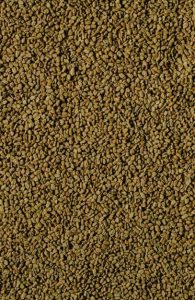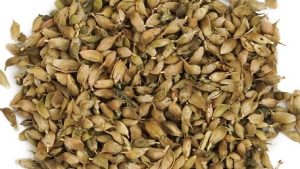
As herbal supplements become more popular, people are becoming interested in the differences between various herbs, especially those that are closely related. One such case is the difference between fenugreek and blue fenugreek. While the two are closely related, they differ in several aspects, from appearance to taste.
In this article, we will explore the differences between these two plants, their uses, and how they differ in appearance, taste, and health benefits.
What is Fenugreek?
Fenugreek (Trigonella foenum-graecum) is an annual plant in the family Fabaceae, native to the Mediterranean region and cultivated worldwide as a semi-arid crop. The leaves of fenugreek consist of three small obovate to oblong leaflets.
The plant’s seeds have a bitter and slightly sweet taste and are commonly used as a spice in Indian and Middle Eastern cuisines. The seeds are also used to make supplements, which are believed to have various health benefits, such as lowering blood sugar and increasing milk production in breastfeeding women.
What is Blue Fenugreek?
Blue fenugreek (Trigonella caerulea) is a culinary herb native to the Alps in Central and Western Europe and the Caucasus, which is on the border between Asia and Europe. Blue fenugreek is little known outside these regions and is widely used in Georgian cuisine. The dried seeds of blue fenugreek are usually sold as a pale greyish-brown powder consisting of both pods and seeds, which have a milder taste compared to the fenugreek plant.
Fenugreek Vs. Blue Fenugreek
Differences in Appearance
The most significant difference between fenugreek and blue fenugreek is their appearance. The flowers of fenugreek are usually yellow in color and larger than those of blue fenugreek. The leaves of fenugreek are also only very finely toothed to wavy, while blue fenugreek leaves are coarsely toothed.
Differences in Taste
While both plants have a slightly bitter taste, blue fenugreek is milder in taste than fenugreek. Blue fenugreek is used in Georgian cuisine to flavor meat dishes, soups, and sauces. In contrast, fenugreek is used to add flavor to curry dishes, spice blends, and chutneys in Indian and Middle Eastern cuisines.
Health Benefits
Both fenugreek and blue fenugreek are believed to have various health benefits. Fenugreek seeds have been traditionally used to lower blood sugar levels, increase milk production in breastfeeding women, and improve digestion. Blue fenugreek is said to have similar benefits, such as reducing inflammation, improving digestion, and lowering blood sugar levels.
Last Words
There is a clear difference between fenugreek and blue fenugreek. Fenugreek is a traditional spice that is used in Indian cuisine, while blue fenugreek is a different variety of the same plant that has a more pungent flavor. Both varieties offer numerous health benefits, but blue fenugreek is more commonly used as an herbal remedy to treat a variety of medical conditions. Ultimately, the choice of which spice to use is up to the individual, as both can provide a range of health benefits.












